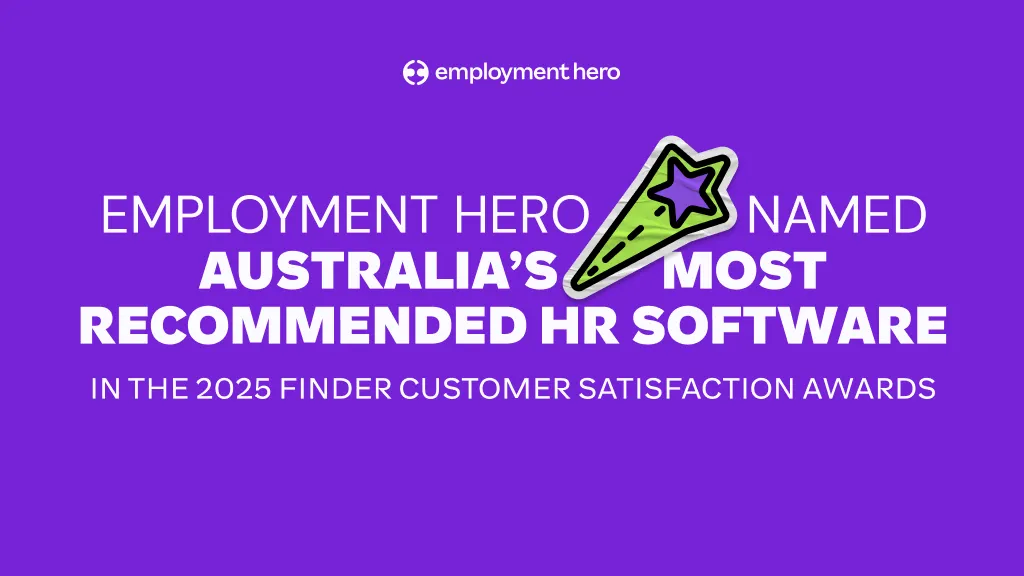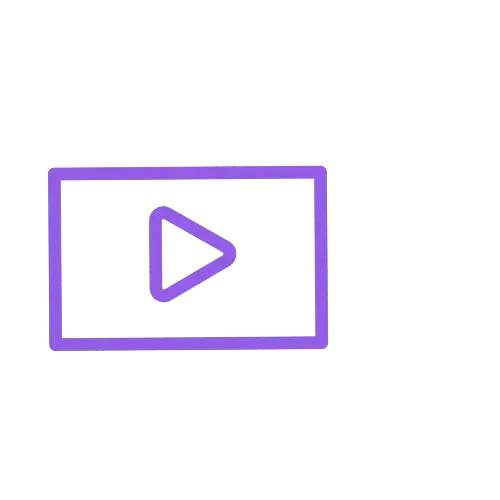Top resume dos and don’ts according to Australian recruiters

Contents
Unlock your next big opportunity and craft a killer resume that demands attention. Recruiters in the Australian job market spend mere seconds scanning resumes. To truly stand out, you need to master the art of what works and what doesn’t.
We’ve interviewed the Employment Hero Talent team to bring you this ultimate guide, packed with insights from seasoned Australian recruiters, designed to help you forge a resume that not only meets local expectations but explodes off the page and gets you noticed.
Why your resume matters in the Australian job market
Your resume is your first impression; it’s your opportunity to tell Australian recruiters why they should consider you for a role. With many industries experiencing fierce competition, a polished and focused resume can make you stand out.
Here’s what Aussie recruiters expect:
- Conciseness is key: Resumes should be no longer than two pages. Australian employers value directness and relevance.
- Use Australian English: Local spelling and grammar matter. Words like “organise” and “analyse” should follow Aussie conventions.
- Be results-driven: Highlight measurable outcomes in previous roles to demonstrate impact.
- Adapt to ATS: Australian companies frequently use Applicant Tracking Systems (ATS), so incorporate job-specific keywords.

Job experience dos and don’ts
A detailed yet concise work history can make or break your resume. Follow these recruiter-approved tips to showcase your experience effectively.
Dos
Include relevant experience: List your most recent and relevant jobs that relate directly to the position you’re applying for. Focus on roles that show off your skills and achievements that relate to the job you want.
Use bullet points: Keep it organised with bullet points that quickly outline your responsibilities, achievements, and results. This makes it easy for employers to scan through and understand your experience without much effort.
Start with action verbs: Begin each bullet point with strong action verbs to describe what you accomplished and what you were responsible for. It adds punch and shows that you’re a go-getter. Action verbs are words like: achieved, coordinated, improved, or won.
Talk about results: Instead of just listing your job duties, talk about the results and outcomes you achieved in your previous roles. It shows that you can make a positive impact, and gives weight to your skills.
Customise your experience: Tailor your work experience section for each job you apply to by focusing on the skills and experiences that match the job requirements. Look at the job description to figure out what to emphasise.
Don’ts
Don’t use generic language: Be specific when describing your responsibilities and achievements. Skip the boring stuff like “responsible for” or “assisted with.” Instead, use action verbs (designed, presented, researched) and concrete language to show what you can do.
Don’t bend the truth: Always be truthful about your work experience. Don’t exaggerate your achievements or responsibilities. Employers often fact-check, and lying will only hurt your chances.
Don’t copy the job description word for word: It’s good to incorporate keywords from the job description, but don’t just copy and paste it. It could come across as low effort. Find a different way to say the same thing.
Don’t include confidential information: If you worked on a huge, top secret project at your last job, of course you want to talk about it. But make sure not to mention any identifying names or phrases that could get you in trouble. Talk about your contributions, but don’t share private details.
Don’t try to hide gaps: It can be tempting to stretch your time in a job by 6 months to cover a gap of unemployment. But honesty really is the best policy.

Hard skills: Tips to include and mistakes to avoid
Technical or role-specific skills demonstrate your suitability for a position, but listing them effectively is key.
Hard skills to include
Clearly list your hard skills: Create a dedicated skills section on your resume where you can explicitly list your hard skills. This section can be titled “Technical Skills”, “Hard Skills”, or something similar.
Highlight your top skills: Focus on the hard skills that matter most for the job you’re applying to. Prioritise and emphasise the skills that are directly relevant to the role.
Use skills throughout your resume: While a dedicated skills section is essential, don’t limit yourself to just that area. Incorporate your hard skills naturally throughout your resume, especially in the work experience section, where you can show how you’ve applied those skills in practice.
Hard skill mistakes to avoid
Don’t use vague terms: Steer clear of generic or unclear terms when listing your hard skills. Be specific and use language that accurately represents your abilities. This helps employers understand your skills better.
Don’t overstate your skills: Be honest about your level of proficiency in each hard skill you mention. It’s important to accurately represent your abilities since employers may assess or test your skills during the hiring process.
Don’t neglect this skills section: Regularly review and update your hard skills section to include any new skills you’ve acquired. Continuously seek opportunities to learn and expand your skill set to stay competitive in the job market.

Soft skills that win interviews and mistakes to avoid
Australian recruiters value soft skills like communication, adaptability and teamwork. Here’s how to integrate them smartly into your resume. Including both hard skills (technical abilities) and soft skills (personal qualities) on your resume will give hiring managers a holistic view of your potential for the role.
When writing your resume, avoid using vague terms like “good communicator.” Instead, describe your soft skills with examples from your work experience. Remember that you can always improve your soft skills through practice, training, and personal growth.
Examples of soft skills
- Communication skills: Active listening, verbal communication, written communication, presentation skills, negotiation and conflict resolution.
- Teamwork and collaboration: Collaboration, teamwork, interpersonal skills and mentoring.
- Problem-solving skills: Analytical skills, critical thinking, problem-solving and decision-making.
- Adaptability and flexibility: Adaptability, flexibility to change and resilience.
- Work ethic and professionalism: Time management, organisational skills, proactiveness, dependability, attention to detail, initiative, self-motivation and accountability.
- Leadership and influence: Leadership, motivation, coaching and delegation
- Emotional intelligence: Empathy, self-awareness and stress-management.
Key tips
As you’re writing up your soft-skill summaries here are a few helpful tips to keep in your back pocket.
- Use storytelling techniques like STAR (Situation, Task, Action, Result): For example, “Resolved client disputes (Situation) by initiating weekly check-ins (Task), improving satisfaction scores by 15% (Result).”
- Frame skills within achievements: Show, rather than tell. For instance, “Led a cross-departmental team to deliver a project three weeks early” demonstrates both leadership and teamwork.
- Avoid listing soft skills as bullet points: Instead of saying “Good communicator,” show how you’ve effectively communicated in a professional setting.
- Skip fluff: Claims like “excellent interpersonal skills” need tangible proof.
Volunteer experience: What to include and what to skip
Volunteer experience can enhance your resume, particularly for entry-level candidates or anyone looking for a career change. It helps to demonstrate your interest and dedication to an industry or how you’ve built new skills on your own time.
- Include relevant roles: Highlight volunteer work that demonstrates skills applicable to your desired job. For example, coordinating events showcases time management and organisation.
- Include community engagement: Employers in Australia value a strong commitment to the community.
- Skip irrelevant details: Volunteering at a local animal shelter is great, but if it’s not relevant to the role, it’s better left off.
- Skip short-term stints: Unless they demonstrate significant impact (e.g., a successful one-day fundraising event you led).
Education and certifications: What Aussie employers value most
When creating your resume, it’s important to clearly outline your education and qualifications in a way that employers will understand and appreciate. Think about what they’re looking for when they review applications.
You should always list certifications that are directly related to the industry you want to work in. For example, if you’re in leadership, a Cert IV in Leadership and Management would be valuable. If you’re working in hospitality, an RSA (Responsible Service of Alcohol) is a must, and for construction, a White Card is essential. Also, make sure to highlight any degrees or diplomas you have, including your field of study and any special achievements or distinctions.
When it comes to what to leave out, generally, you don’t need to include your high school information unless you don’t have any higher education or if your high school experience is really important for the job you’re applying for. If you haven’t finished a course of study, don’t just list it as incomplete. Instead, explain it in a positive way, such as “Currently completing Diploma of Marketing.”

Formatting tips that make your resume stand out
Recruiters want resumes that look good and are easy to use. To make sure your resume does this, remember these tips.
What to do: Use simple fonts like Arial or Calibri to make it easy to read. Save your resume as a PDF so it works on any device, which is important in Australia. Also, make sure your resume is easy for computer programs (ATS software) to read by avoiding too many pictures or complicated designs.
What not to do: Don’t use too many colors or fancy templates that can take attention away from what you’ve written. Focus on the content of your resume. Also, remember that many recruiters look at resumes on their phones, so make sure yours looks good on a mobile device.

Cover letters in Australia: Essentials and what to leave out
A tailored cover letter can complement your resume. Here’s what Australian recruiters want.
| Essentials | Leave Out |
| Personalisation: Address the cover letter to the hiring manager whenever possible. Structure: Introduce yourself, outline your relevant qualifications, and close with a call to action. Tone: Be respectful yet confident. Use professional and concise language. | Overly formal language: Avoid phrases like “Dear Sir/Madam.” Generic content: Copy-pasting the same cover letter for every role won’t impress. |
Looking for more advice on creating a cover letter? Head to our blog How to write a cover letter that lands a job.
Other common resume mistakes to avoid in Australia
To prevent your resume from being rejected, avoid common pitfalls such as spelling and grammar errors. Proofread or utilise tools like Grammarly for assistance. Ensure all experience listed is relevant to the job you’re applying for, omitting roles that do not contribute value. Finally, it’s best to leave off any photos, date of birth and only include Australian contact details.

Kickstart your job search
If you’re ready to take the next step, Employment Hero Jobs makes building a professional, tailored resume effortless. Using AI, it integrates best practices like the ones shared here to give you a competitive edge in the Australian job market. Start crafting your career success story and search for new jobs today.
Common resume FAQs from Aussie jobseekers
When you’re writing your resume, it’s generally best to focus on the work experience you’ve gained in the last ten years. Recruiters are usually most interested in your recent professional history. However, if you have older experience that is very important and directly relates to the job you’re applying for, then it’s okay to include it. Just make sure that any experience you list, no matter how old, shows how your skills and background fit the position you want.
You don’t need to put your references on your resume. If a job requires them, you can simply state “Available upon request.”
In Australia, the best way to send your resume is as a PDF. This is because a PDF file will look the same on any computer, so you don’t have to worry about your resume getting messed up when someone else opens it. It’s a reliable way to make sure your application looks professional and is easy for recruiters to read.
For most job applications, there’s no need to include your Grade Point Average (GPA) on your resume. The only time it might be helpful is if you’ve recently graduated and achieved a very high GPA, as this could show employers your academic achievements. Otherwise, focus on your work experience and skills.
The debate around cover letters continues, but here’s our take: always check the job advertisement first. If a cover letter is requested, submit one to significantly boost your chances of an interview. Even when it’s not explicitly asked for, a well-crafted cover letter can give you a competitive edge. It’s an opportunity to showcase your personality, enthusiasm, and strong writing skills, helping you stand out from other applicants who rely solely on their resumes.
Related Resources
-
 Read more: Employment Hero Named Australia’s Most Recommended in 2025 Finder Awards
Read more: Employment Hero Named Australia’s Most Recommended in 2025 Finder AwardsEmployment Hero Named Australia’s Most Recommended in 2025 Finder Awards
Employment Hero was voted the most trusted and recommended HR software in the 2025 Finder awards from more than 60,000…
-
 Read more: Employment Uncovered 2025: The Story of Australian Work
Read more: Employment Uncovered 2025: The Story of Australian WorkEmployment Uncovered 2025: The Story of Australian Work
Inside the story of Australian work in 2025. From rising ‘sickies’ to hiring fatigue, see how workforce patterns are shifting.…
-
 Read more: PEO vs. EOR: A guide to global hiring
Read more: PEO vs. EOR: A guide to global hiringPEO vs. EOR: A guide to global hiring
Learn the key differences between a PEO and an EOR. Discover why an EOR is the smarter, safer way to…























